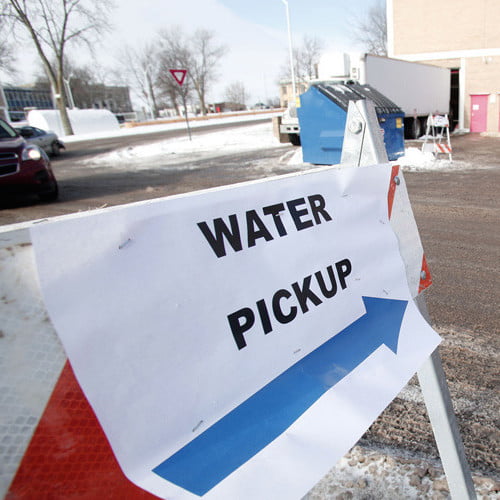Ohio EPA fires two employees over lead-contaminated water in Sebring

The Ohio Environmental Protection Agency fired two employees and demoted one in response to lead contamination in the Sebring Public Water system, which serves about 8,100 people.
Much like in Flint, Michigan, one of the story’s great controversies lied in the fact that officials waited over three months to notify residents of the contamination. The firings come as a result of an internal investigation into the delay.
Since the middle of January, about 40 homes have reported unsafe levels of lead in their tap water, according to the Dayton Daily News.
[su_button url=”http://www.mydaytondailynews.com/ap/ap/ohio/the-latest-ohio-epa-fires-2-over-lead-in-villages-/nqRpQ/” target=”blank” background=”#e50403″ color=”#ffffff” size=”6″ icon_color=”#ffffff” text_shadow=”0px 0px 0px #ffffff”]Read More[/su_button]
1/29/16: Congressman Tim Ryan, a U.S. Representative from northeast Ohio, called for the resignation of Ohio EPA Director Craig Butler following his fumbling of the water crisis facing Sebring, Ohio.
Ryan (D-Niles) said that the EPA should have told Sebring residents about their contaminated water back in October instead of waiting for months to inform people that their water contained excessive amounts of lead.
“I cannot believe that someone in that position of trust would be so passive and so neglectful when they know that the risks were so very high for those people,” Ryan said, of Butler.
1/27/16: In what can only be described as a systemic failure of state and local government, Sebring, Ohio is facing a water crisis similar to the one in Flint, Michigan, though hopefully not as severe.
The Columbus Dispatch reports that Ohio EPA officials knew about the metal-contaminated water supply as early as October. Instead of immediately taking action, the EPA issued several warnings to the Sebring water treatment plant and gave them a deadline of November 29 to inform customers.
Only on January 21 did Sebring residents learn they were at risk, when the EPA issued a notice of violation to the water treatment plant.
Like in Flint, Sebring’s water is too acidic for safe consumption. Acidic water dissolves the lead pipes that deliver water to people’s homes, leaving traces of harmful metals in water used for drinking and bathing.
Though the crisis has received national and even international attention, EPA spokeswoman Heidi Griesmer said that only one home’s water had elevated levels of lead in the most recent round of testing, according to Fox News.
Regardless, schools in Sebring have been closed for days and residents are buying up bottled water.
True crisis or not, Flint and Sebring are wakeup calls to the dangers of contaminated water. Let’s hope that the next water crisis is stopped before it starts.
BROUGHT TO YOU BY



